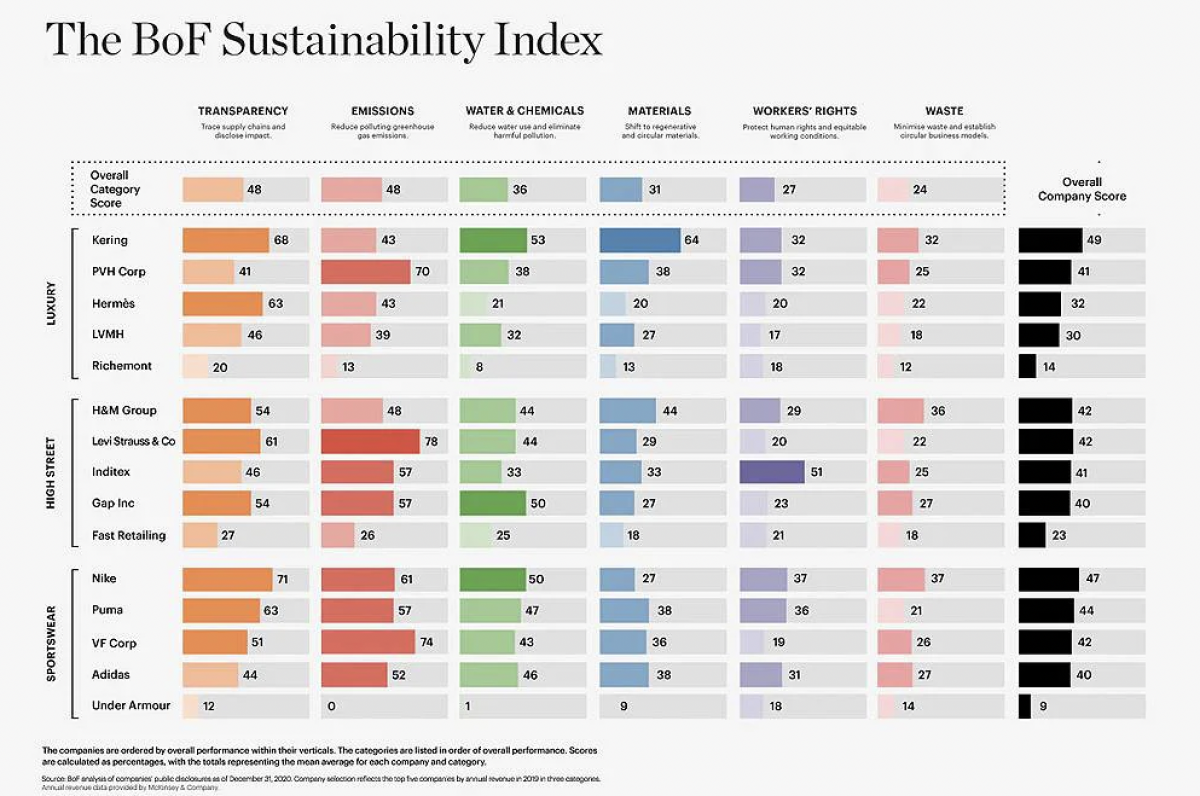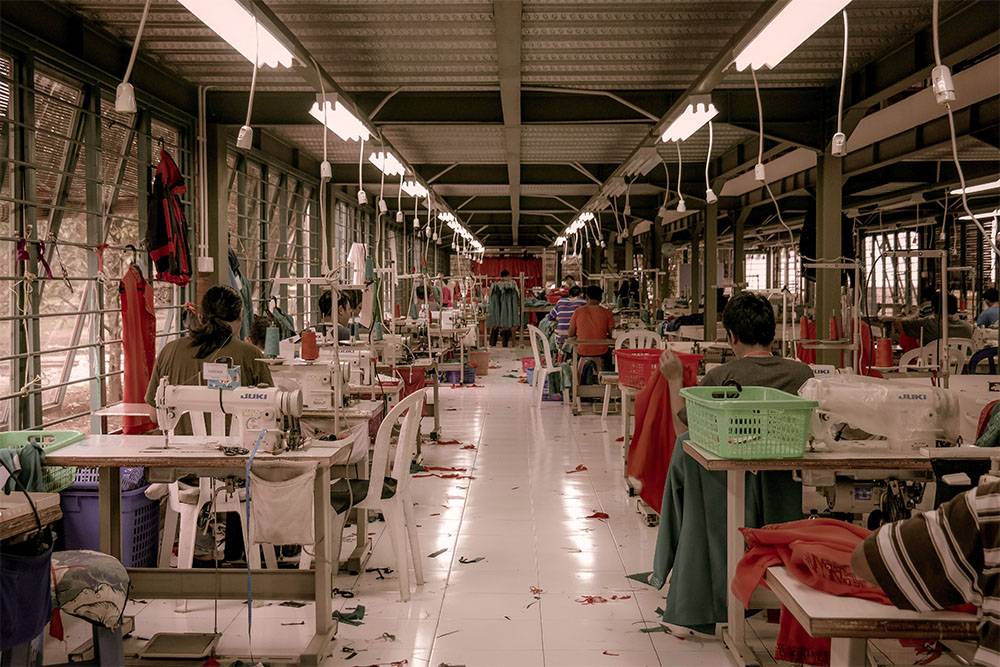The fashion industry has long stemmed debate about human rights. Brands have a Corporate Social Responsibility to ensure equal treatment along the supply chain. But it’s not happening. And although more people are aware of what goes on. Conditions aren’t improving.

Most of our clothes are made in countries where workers’ rights are either limited or non-existent. What does exist are dangerous working conditions. 18-hour workdays. No breaks. And less than a living wage. According to the European parliament. This is modern-day slavery.
Slave Labour & Repeated Warnings
It is often global brands that are buying into slave labour. They are looking for low prices and tight production timeframes. Despite these harsh conditions and repeated warnings from watchdog NGOs, the topic tends only to reach the world media when a disaster or major accident has occurred.

According to the World Trade Organisation (WTO), Asia alone accounts for 58.4% of world clothing and textile exports. More than 70% of EU imports of textiles and clothing come from Asia.
Over the past five years, issues such as child labour, forced labour, health and safety, and the exploitation of migrants in the workplace have worsened globally for the industry. Wage theft and worker suppression also continue to increase in fashion’s supply chain. The pandemic has only exacerbated this trend.
Navigating these issues is becoming more complex and more pressing. While regulators demand companies take responsibility for misdeeds in their supply chain. Investors require more information about potential risks. The consequences of inaction are severe. It is an urgent matter.
If it’s Cheap and Easy for you to Buy Clothes, it’s Harder for Someone Else to Make a Living

Become more conscious. Pay attention to the things around you. Think before you purchase. If you are buying a shirt that cost $8 at a retail store, what is the farmer who grows the cotton and the person producing it being paid? The chances are, less than a living wage. Fast-fashion equals forced labour. As a concept, buying quick, cheap clothing, for too many people, can appear to be harmless. But this is where the problem lies. There continues to be a knock-on effect down the supply chain. That cheap shirt means workers are probably being underpaid, subject to exploitation and abuse.
What Can I Do?
Well, there are a number of reasons why the fashion industry continues to be so susceptible to human rights violations. But in the end, it boils down to globalisation and consumerism. It boils down to you!
As a consumer, you can do things to facilitate change.
- Demand transparency – Know the brands you buy your clothes from inside out. Email them and ask them about their production processes. Download The Fashion Transparency Index and keep track of brands. Hold them accountable!
- Raise public awareness and educate yourself and others – Have conversations about human rights and what’s going on.
- Get involved in initiatives – Support petitions, reports and investigations that are sent to parliament by initiatives to propose fairer measures within the industry.
- Support small brands and local businesses – These brands do exist! Research your favourites and see what they score on the sustainability index.
- Download the ‘Good on You’ ethical fashion app – Wear the change you want to see and discover ethical brands. See how your favourites measure up. Check out the ‘Good on You’ brand rating system.
Check out some of our favourite worldwide ethical and sustainable brands:

Dedicated– Conscious streetwear brand from Sweden. Scores 5/5 for people, animals and planet.
La Relaxed– A US brand that specialises in organic and sustainable clothing for women. Scores 5/5 for people, animals and planet.
Afends– Australia-based fashion brand leading the way in organic hemp fashion, using renewable energy to reduce its climate impact.
Patagonia– Uses eco-friendly materials and has good policies to monitor suppliers in its supply chain.
Luna and Sun– Australian clothing label that offers cruelty-free, slow fashion.
What Current Legislation Exists to Stop this?
The Universal Declaration of Human Rights is a common standard of what human rights legislation should look like. It covers equality and freedom, however, it comes down to individual countries to regulate human rights within their corporations.
The Modern Slavery Act exists to report on the risks of modern slavery in its operations and supply chains and actions to address those risks.
Everyone has the right to just and favourable conditions of work (Article 23)

What we need is policy change. Cultural change. Industry change. Advocate and campaign for changes! Influence our government to stop and do something! To play a more active role in enforcing laws and regulating the industry.
The fashion transparency index is a step in the right direction. This index has set new standards in ethical measures.
An ethical brand cares about its use of resources and energy. Reducing carbon emissions. An ethical brand ensures workers are treated fairly across the supply chain. This includes policies and practices on child labour, forced labour, worker safety, the right to join a union and payment of a living wage. Ethical brands care about animals. They use very few or no animal products. Ideally, the brand is 100% vegan.
When we understand what modern-day slavery is, we will be able to identify cases of it. We can implement protection more effectively and we can stand up for the people who are being exploited.
Subscribe to FIB’s Weekly Breaking News Report for your weekly dose of music, fashion and pop culture news!







